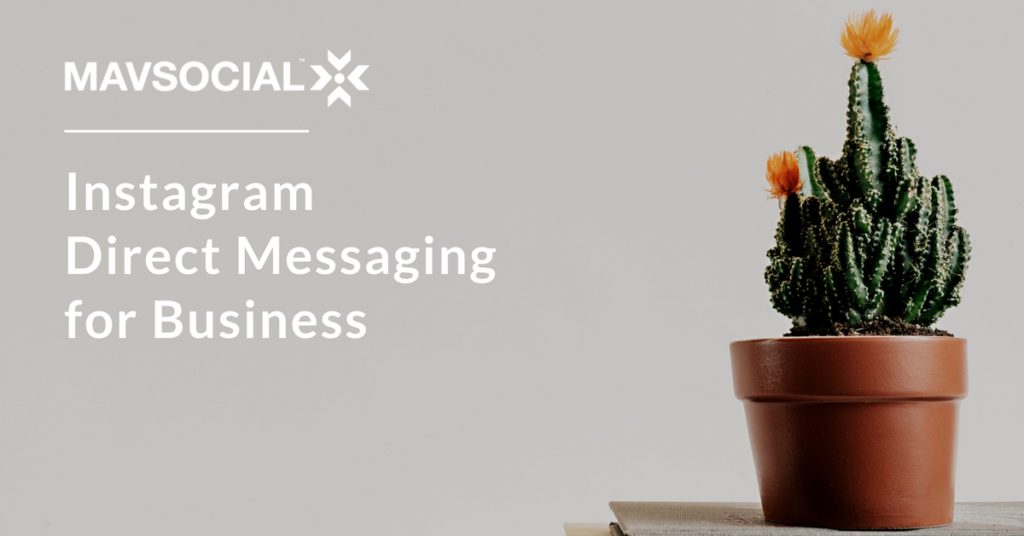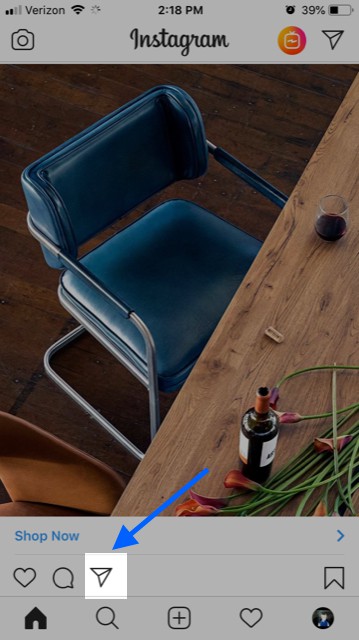Messaging services have come a long way from the homing pigeon and the early days of AIM, thank goodness!
Today, most of us are using free, fast, and fun options like Google Hangouts and Whatsapp, although businesses are showing a trend for sticking to services by social media networks.
We’ve already taken a look at Facebook Messenger for businesses, but while Facebook is still very much the king of social media, it’s certainly got a few little princes and princesses keen to take the throne.
In fact, one of the most likely contenders to knock Facebook from its top spot as a direct message platform is sister-network Instagram, which the New York Times has lovingly referred to as ‘Facebook’s next Facebook’ ever since the platform grew by a whopping 100 million users within just a 6 month window during the first half of last year.
Statistics like this are now posing an interesting question: should businesses be putting all their eggs into one (particularly strong) Facebook basket, or should they be branching out and discovering alternative communications options?
For example, are Instgram direct messages going to present themselves as a viable advertising space for marketers? And, will they take over Facebook’s focus on their Messenger ads?
Let’s take a look…
You may also want to download our free Instagram Direct Message Templates for Business!
What is Instagram Direct?
There’s nothing particularly unusual or groundbreaking about Instagram’s direct messaging feature. In fact, at its core, the service is simply a way of sending direct messages that include photos, videos and other posts to friends.
So what’s the big deal? Well, it instantly creates a way to connect with selected users on a more personal, more intimate, and more individual level.
It removes the generalized, widespread, public aspect of Instagram, instead, making it easy to ensure that relevant users see relevant content; a way to share cute cat pics with feline-friendly people.
Instagram Direct for Business
Are people really using it? Absolutely! In fact, Instagram seems to be quickly catching up on Facebook Messenger, reporting more than 375 million active users each month. This rapid rise suggests that Instagram’s messaging service could prove to be a useful marketing tool, but before we’re able to fully determine its value, we need to be asking three important questions:
- Can it be used by businesses?
- Should it be used by businesses?
- How can it be used by businesses?
Let’s jump straight into question 1…
Can my business get Instagram Direct?
If you have an Instagram account, then there is no reason why you can’t make use of the direct messaging service. You can find the messaging feature in the top right corner of the Instagram App. From there you’ll be able to view messages you’ve received as well as ones you’ve sent.
To send a direct message, simply click on the “+” icon at the top right. Now, you can search from your list of followers and send either a single direct message or a group message to multiple followers. The message you send will only be visible to the people you’ve sent it to (think of it as a private message).
Alternatively, you can also send a photo or video from your Instagram feed. Simply click on the same arrow icon (shown below) and then choose a follower or group of followers.
Here’s a quick video showing you 4 ways to send a direct message on Instagram.
If your business doesn’t have an Instagram account, then it’s time to get one!
Instagram may have started off as a heavy consumer platform, but it has quickly transformed itself into one of the most effective ways to create strong and durable B2C relationships.
Instagram itself reports that more than 80% of accounts follow at least one business, with 200 million visits to business accounts every day!
Should my business get Instagram Direct?
The real draw of Instagram’s direct messaging feature is that it presents a way of controlling who sees what, making sure the right people see the right content at the right time and connecting with recipients on a deeper level.
It’s exactly this level of personalization which has fast become one of the most important ways of engaging with consumers.
Forbes reports that a personalized buying experience can be hugely beneficial, resulting in more ‘impulse purchases’, greater revenue, fewer returns, and, perhaps most importantly, boosted loyalty, with nearly half of all customers claiming they would return following a personalized experience.
How can my business use Instagram Direct?
While there are many ways you can benefit from incorporating Instagram direct messaging into their campaigns, targeting and exclusivity are on the top of the list.
The idea of targeting can be used to increase chances of conversion by providing the right audiences with the right content (read: ‘most relevant’), while the concept of exclusivity sort of speaks for itself. All consumers want to feel important and want to feel valued.
One way to do this is to send out exclusive offers to select accounts using direct messaging — consumers may feel more inclined to take action.
Even if a transaction doesn’t happen right away, it gives you the opportunity to nurture the relationship and provide one-on-one customer care.
Still not convinced? Here are a few case studies to show you just what you’re missing…
Michael Kors
The American luxury brand announced 50 giveaways to its followers via Instagram messaging in exchange for Instagram posts using the hashtag #MKDirect.
This resulted in a massive influx of user-generated content and earned impressions on Instagram for Michael Kors.
Kardashian Kollection
As a way of testing the waters, Kim Kardashian famously used the messaging service to send an exclusive photo to just 15 of her followers.
The image included a hashtag, which could then be shared by the lucky recipients to their own Instagram channels, massively boosting ‘KK’ awareness.
Hyatt
The well-known hotel chain wished their followers ‘Happy Holidays’ with a very jolly photograph…. Well, some of their followers!
Using Instagram Direct, Hyatt was remarkably select about who would receive the image, ensuring that it was sent only to ‘influencer’ accounts; those most likely to share and report.


